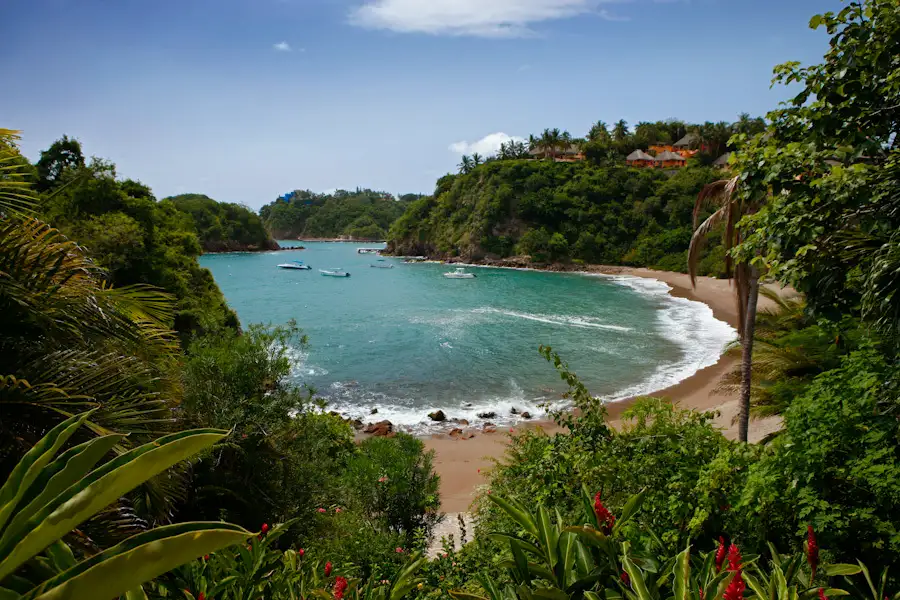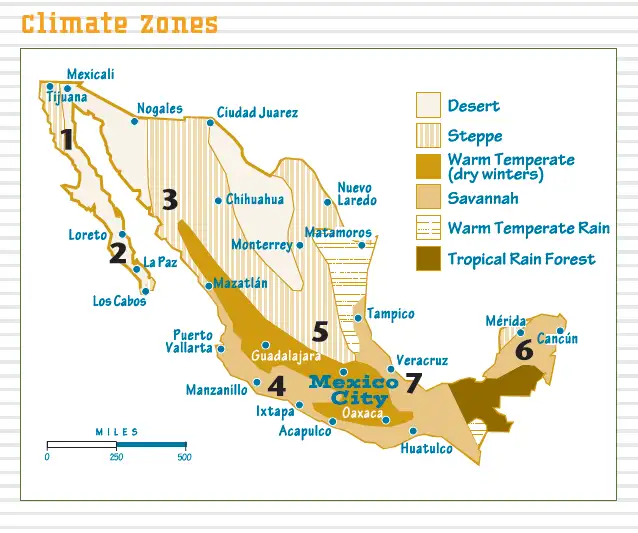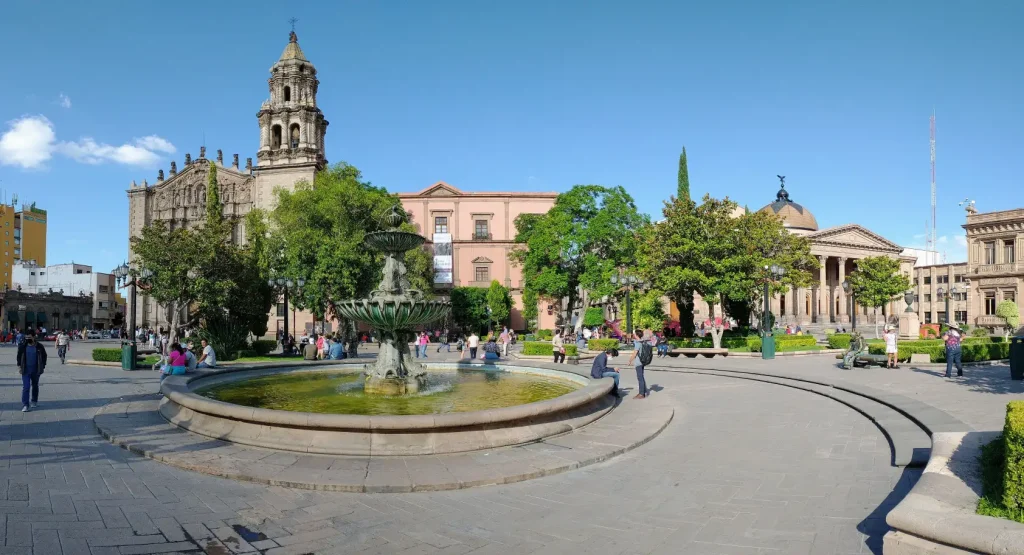Climate and Connectivity are two of my SIX Criteria for living in Mexico. Climate and Connectivity don’t really go together. Or do they? Is Mexico’s best year ’round weather also a region with Mexico’s best air and bus service? Let’s get started.
In this article, the places I’m going to describe are “mainstays” (more so than lesser known) parts of Mexico that are “viable” for today’s US or Canadian emigrant. I will no doubt leave off some other choices that are highly worthy of your attention.
What I consider “viable” are places that have personally visited. They have sufficient infrastructure and connectivity to be considered. These places may rank LOWER for other Criteria. Mexico City for example is highly rated for Connectivity, however many cannot live at 7,300 feet elevation, or accept the city’s air quality challenges.
For me, Climate is perhaps the MOST IMPORTANT consideration for year ’round living under a Mexican sun. Here are the TOP THREE places for a year ’round, stable climate with minimal need for either A/C or heating. Here are my TOP THREE CLIMATE choices:
- Lake Chapala: for years this Jalisco State location has been labeled the “world’s second best climate”. If fact, no one has ever been able to document this reference. So, since I’ve lived here for over six years (and been visiting since the 1980’s), I hereby declare us Numero Uno!
- With the latitude of Hawaii and the altitude of Denver, it’s just about perfect here. A glorious rainy season (June-October) of very low humidity, with the rain generally coming during the evenings and nights and a dry season with crisp mornings (low 50’s) and bright sunny days (mid 70’s), you won’t find a better climate anywhere in Mexico (or the world!).
- Cuernavaca: once a bastion for American retirees (even jazz greats like Gil Evans and Charles Mingus), the city of eternal spring is a garden of color and a stable, sunny dry season (November-May). The rainy months bring daily showers during late afternoons. Since Cuernavaca is due south of Mexico City, it’s more tropical than Lake Chapala, but still quite pleasant year ’round. The State is a major producer of flowers and tropical produce, sugar cane and rice. The state of Morelos, most of which is between 2,900–9,800 feet above sea level, has a very diverse topography: 42% is mountainous, 16% hilly land, and 42% flat terrain. Cuernavaca occupies a sweet spot for agreeable climate, while other Morelos cities can have cooler and more humid weather.
- Rosarito/Ensenada: This destination is overlooked by many expats exploring Mexico. Just south of the U.S.-Mexico border at San Diego and below the city of Tijuana some 30 minutes is the Rosarito retirement cluster. Ensenada is another 45 minutes south. The weather is essentially that of San Diego– a short rainy season in winter months (often halted by recurring drought); the rest of the year being sunny, with Pacific breezes and a summer marine layer that tends to burn off around mid-day. No real temperature extremes to worry about (and low summer humidity) help make this arguably the ONLY beach destination in all of Mexico that avoids high heat and humidity during May-October. It’s also far away from hurricanes patterns. Just darn nice weather, all year.
Now let’s explore Connectivity.
This criterion will be somewhat determined by what other parts of the world you are likely to visit from your new home in Mexico. West Coast US residents might find the Mexican Caribbean just too far, and East Coasters might write-off Baja locations.
There’s also the important access to inter-city bus and air transportation. If you are somewhat isolated by a northern location (like is the case with the Baja and borders states), access to central Mexico colonial cities is just too far. Central Mexico (as we will see) has the country’s best AIR and BUS transportation systems. Here are the top destinations for connectivity:
- Mexico City: set in the Valley of Mexico (a mostly vanquished lakebed), CDMX now has a brand new (second) international airport. Opened in early 2022, the Felipe Angeles facility (20 miles north of the city) will complement the tired but still efficient AICM (Aeropuerto Internacional de la Ciudad de Mexico). AICM operates flights to more than 30 countries, including good access to Central American and South American locations (Brazil, anyone?). It’s also the bus “hub of all hubs”. So, living here means you can easily explore surrounding states like Puebla, Morelos, Mexico, and Hidalgo.
- Guadalajara: In west central Mexico, GDL has begun reinvesting in transportation infrastructure: a new light rail urban train, a second runway at its modern airport and a new bus terminal. These developments help ease air access to U.S. and Mexican domestic destinations. There is also now nonstop air from GDL to Spain. Its airport is efficient and easy to navigate. A new Central Camionera (bus station) connects with the city’s Metro light rail for easy transit from the city to dozens of destinations across central Mexico (Puerto Vallarta is four hours by bus, or 30 minutes by air!).
- Cancun or Puerto Vallarta: Cancun is Mexico’s second busiest airport and offers direct flights to over 20 countries. For the U.S. and Canada visitor, there are non-stops to as far away as Seattle and Toronto. Over on the Pacific side, Puerto Vallarta is the leader, with non-stops to cities across North America. Buses from Cancun (and the new “Tren Maya” railroad project) give Cancun exceptional reach to other Yucatan Peninsula destinations. From Puerto Vallarta you can head inland to Guadalajara or north (Mazatlán) or south (Manzanillo, Ixtapa).
Some others to consider for great climate:
Guadalajara, Querétaro State, Guanajuato State, Oaxaca State. Aguascalientes State.
Some other to consider for great connectivity:
Cities like Tijuana (and nearby San Diego), Chihuahua State (for quick jumps to Texas).
Explore earlier blogs related to Climate and Connectivity.





